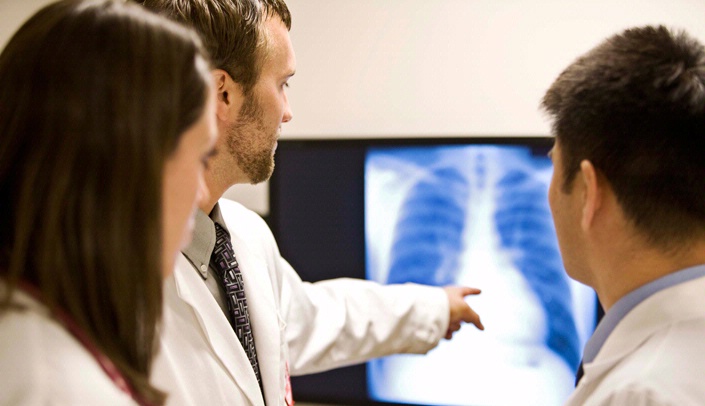Condition: critical.
That’s how UNMC and Nebraska Medicine leaders describe the state of funding for graduate medical education programs.
Committee members
The 11-member GME Finance and Workforce Committee: Vicki Hamm, Mike McGlade, Mike Wadman, M.D., Chandra Are, M.B.B.S. Jeff Talmon, M.D., Kim Jarzynka, M.D., Jean Simonson, M.D., Matthew DeVries, M.D., Chad Vokoun, M.D., Jennifer Parker, M.D. and Whitney Goldner, M.D. Committee membership will change every two or three years.
The federal government provides the nation about $15 billion a year for educating resident physicians — new graduates of medical schools. Support also comes from state funds and hospitals where UNMC residents are trained. To save almost $15 billion over the next 10 years, federal funding would decrease by .5 percent every year.
Mike Wadman, M.D., designated institutional official for UNMC GME programs and associate dean for graduate medical education, said if the funding trajectory continues, there will be less money for training residents, which will mean less physicians.
“If we stay on the track we’re on now, we’re likely to see that mal-distribution exacerbated more and those impacted the most will be in rural and urban underserved communities,” Dr. Wadman said.
Instead of waiting to see what happens at the federal level, Nebraska Medicine and UNMC officials took action. In a move called forward thinking, Nebraska Medicine, which receives federal funds for GME, put financial decisions and management of GME funds in the hands of UNMC.
To educate each of the 475 UNMC residents UNMC is responsible for, it’s estimated to cost $105,000 or more each year.
UNMC formed the GME Finance and Workforce Committee — a “one-stop shop” where GME fund requests are reviewed and distributed. An algorithmic model the committee created helps determine where best to distribute GME funds, in order to streamline and reduce costs, Dr. Wadman said.
“Before, decisions made within departments weren’t coordinated,” Dr. Wadman said. “If you wanted to start a residency program, you could start one, but it wasn’t coordinated to address the true needs of the state or country. It might have been fine in the past, but now since funds are limited, they have to be spent for programs and initiatives that are really going to have the most impact.”
The model is being called revolutionary and innovative, and has captured the attention of others across the country.
It was chosen as one of three “hot topics” presentations out of 67 to be presented Feb. 5 in Las Vegas at the 10th Annual Academic Surgical Congress hosted by the Association of Academic Surgery. The association is one of the most prestigious groups of academic surgeons in the world, said Chandra Are, M.B.B.S., vice chair of education, UNMC Department of Surgery, who will present on behalf of the committee.
